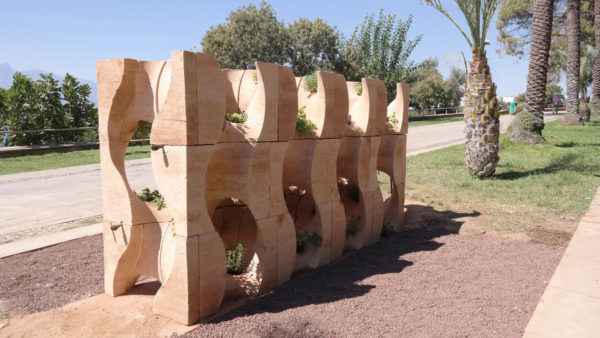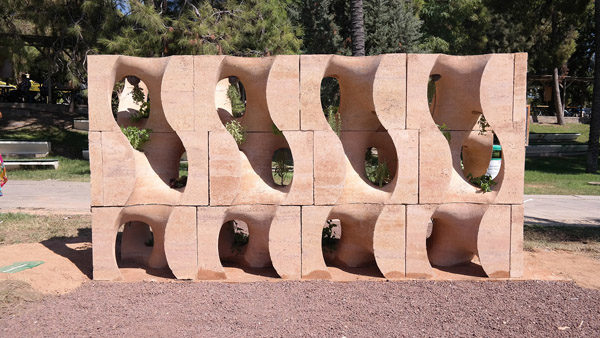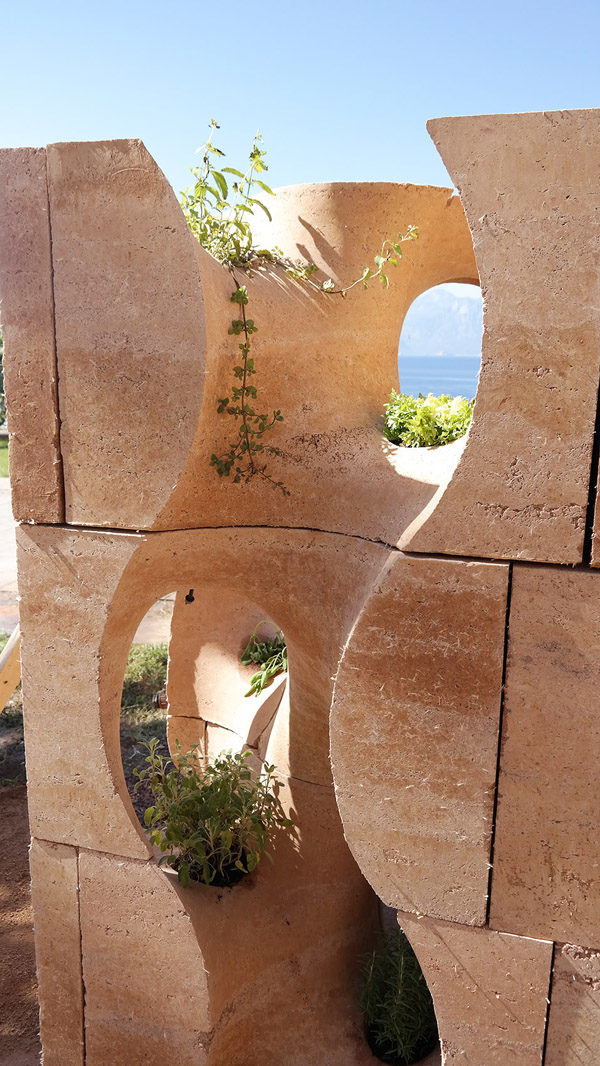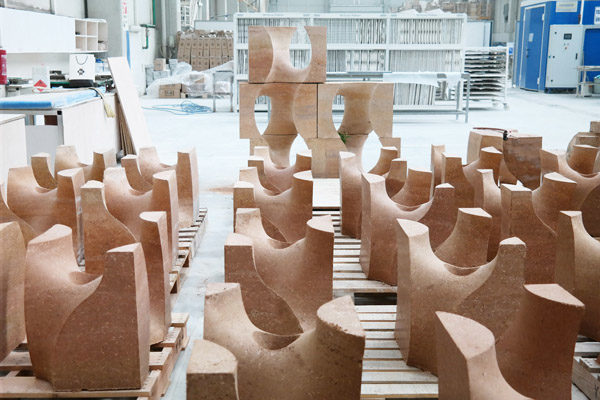Common-action Wall
In 2017, during the 4th International Architecture Biennial of Antalya, we constructed the Common-action Wall in Karaalioğlu Park. We designed this architectural prototype as a wall that enables the growth and harvesting of edible plants for park users. To facilitate plant growth and ensure sunlight access, as well as to direct rainwater toward the plants, we conducted extensive studies on minimal surfaces. Ultimately, we found that the gyroid form met all the requirements. It proved advantageous during the production process, as the entire wall was constructed using a single module.
The modules of the Common-action Wall were fabricated by digital modeling and contemporary molding techniques. Therefore, the main challenge of the project was to combine innovative technologies and a traditional and sustainable construction technique, rammed earth. Moreover, having voluminous voids was a struggle considering the load-bearing nature of the rammed-earth structure. So, we solved this by numerous trials on the additives to earth and reinforcing the module with a steel skeleton.
Sustainability and communal use are critical issues of this design. The herbs and other edible plants grow in pockets both on above and below surfaces increasing the harvesting area according to the space it houses on the ground. Then, we added drip irrigation into the structure for minimum water consumption and to aid the users. The project results from long-term material and forms of research aiming to associate the traditional with digital technologies, and design with people and nature.
For more information, you can visit the [POTplus] website. I will post more on Gyroid geometry in the future.













